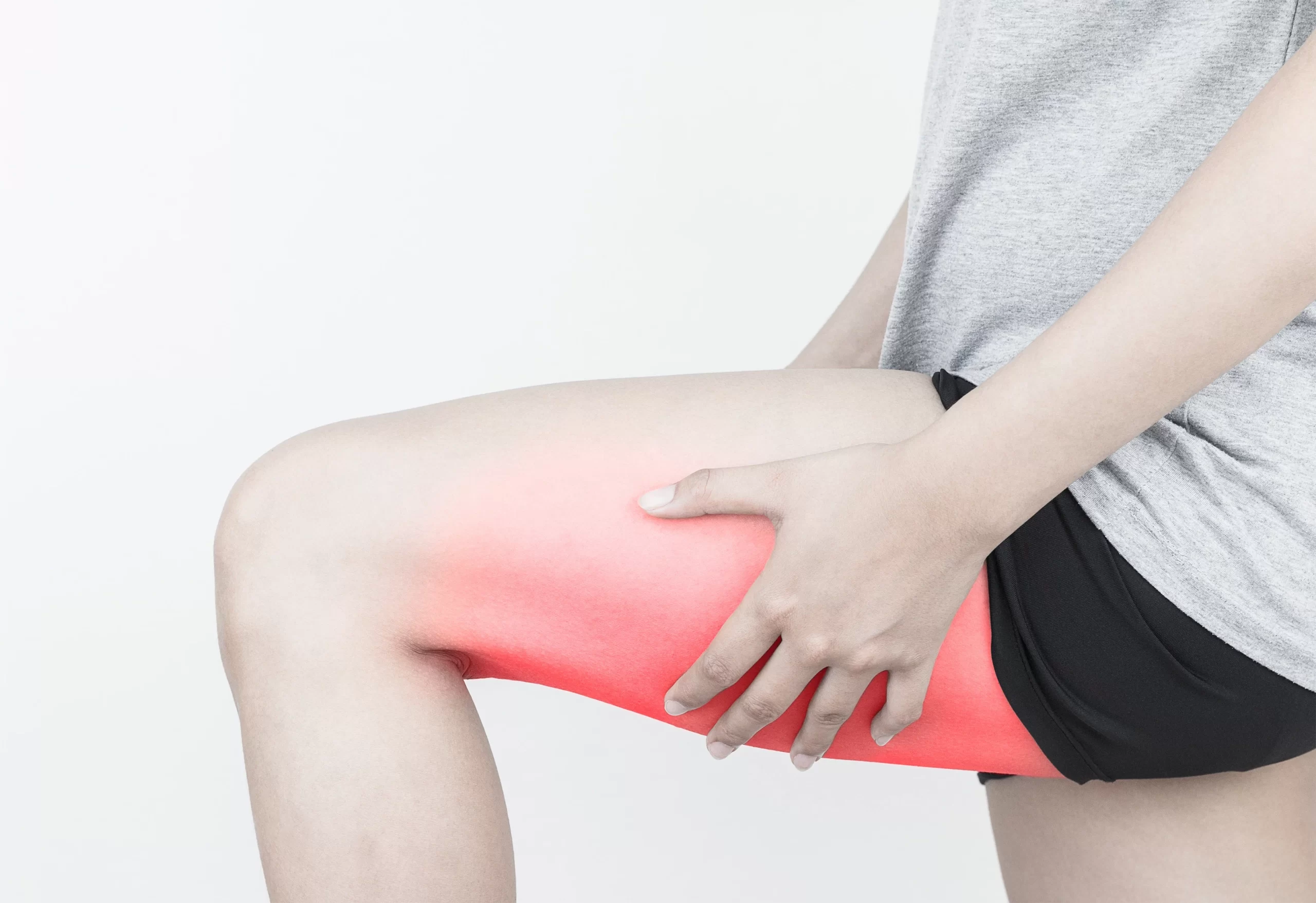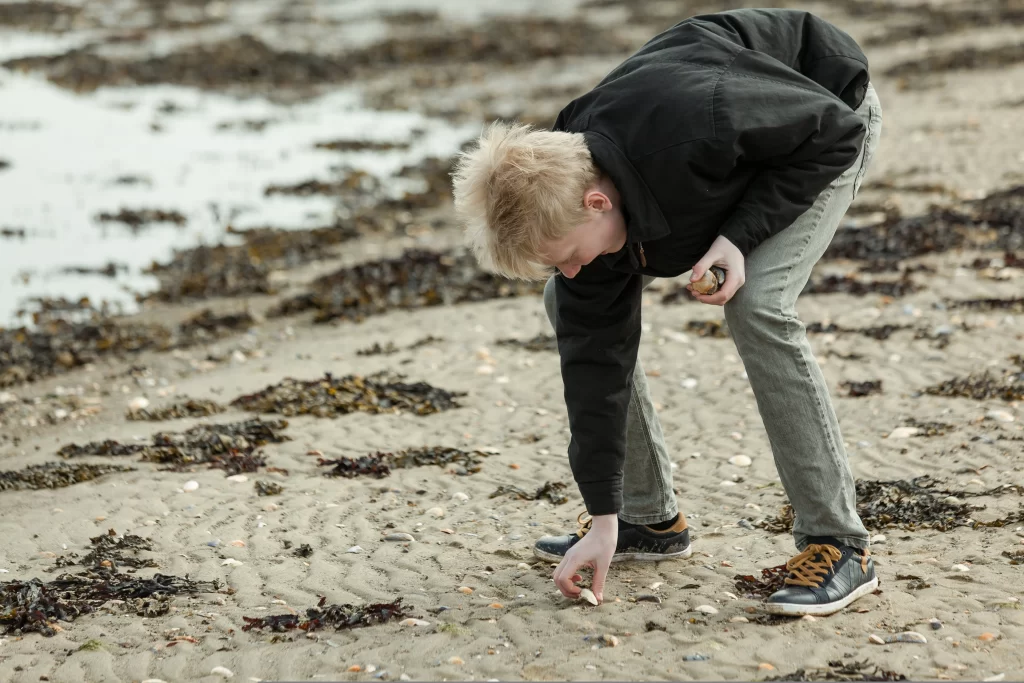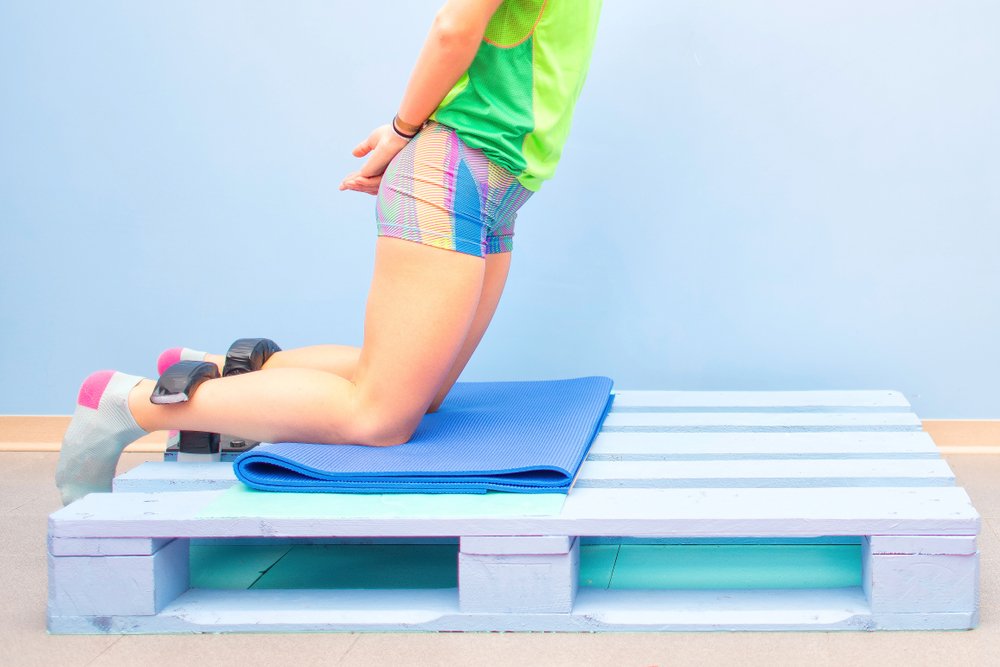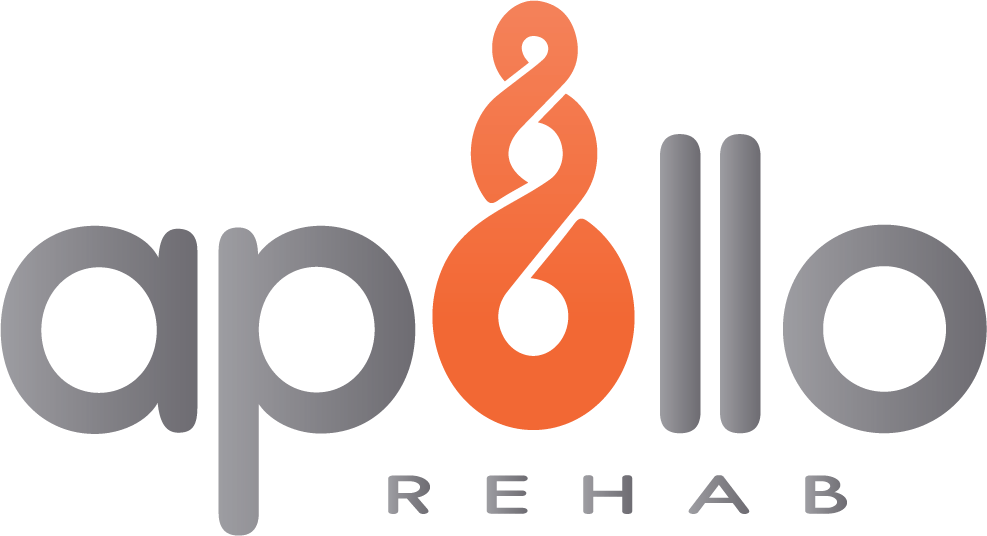
Hamstring Injury: Recipe to Recovery

6 Comments
Post A Comment
Cancel Reply
This site uses Akismet to reduce spam. Learn how your comment data is processed.

This edition of Apollo Knows will cover everything you need to know regarding hamstring injuries. Before we dive into the fine details of the rehab process, you need to understand the importance of knowing how to correctly rehab a hamstring injury.
Hamstring injuries are one of the most common sports related injuries, as they account for 30% of all injuries in the legs [1].
Improper treatment poses massive consequences.
For instance, reoccurrence rates for hamstring injuries has is between 12% and 31% [1] [2]. Even the NFL has taken notice of how often hamstring injuries occur, as they granted $4 million to Wisconsin University in 2021 to study hamstring injury prevention and treatment.
In this post, you will find the latest evidence regarding causes, treatment, and prevention of the two most common types of hamstring injuries: hamstring strains and proximal hamstring tendinopathy.
By reading this article, you have the opportunity to become more educated on hamstring injuries than than all your friends and family.
In this blog post on hamstring injuries, I will cover the following:
A group of 3 muscles located in the posterior thigh that collectively are referred to as the hamstrings. The 3 muscles are:

The biceps femoris originates from 2 different locations. Each origin of biceps femoris is called a “head.” Ie, there is a “long head” and “short head.”
The long head of biceps femoris begins at the ischial tuberosity, which is a bony landmark on the back of the pelvic bones.
The short head of biceps femoris originates near the linea aspera, which is a bony landmark on the back of the thigh near the hip joint.
Both heads come together as they run down the back side of the thigh and connect onto the head of the fibula, which is just below the outside of your knee joint [1].
They both begin at the same location as the long head of biceps femoris, the ischial tuberosity.
From there, these two hamstring muscles run down the back of the thigh until they attach onto the inside of the tibia, which is the bone below and inside of the knee joint [1].
If you cannot already tell from the attachments of the hamstring muscles, they cross the hip joint and the knee joint (with the exception of short head or biceps femoris).
Thus, the hamstring muscle group has the ability to generate movement at both the hip and knee joints. More specifically, they function in extending the hip and flexing the knee.
YES! The hamstrings also function in preventing KNEE EXTENSION while you walk.
By doing this, your hamstrings assist with positioning the knee in a slightly flexed position each time your foot hits the ground.
As a result, you are able to absorb force that is generated with each step.
Conversely, beginning each step with your knee straight will decrease your ability to absorb force and increase stress on your knee and other areas.
There are muscles, tendons and ligaments in each joint of the body.
Ligaments connect bone to bone, such as the anterior cruciate ligament in our knee. “Sprain” is the term given to define injuries to ligaments.
Tendons connect muscle to bone, such as the achilles tendon on the back of our lower leg. “Strain” is the term given to describe injuries to tendons and muscles.
As such, a hamstring STRAIN injury refers to an injury to the hamstring muscles and/or tendon.
Tendinopathy is a term to describe an injury to the tendon.
Tendinopathy injuries used to be known as tendinitis, implying our tendons become inflamed (“itis”). However, it has been found that our tendons do not seem to become inflammed.
Now, with the help of advanced imaging, it is more accepted that tendinopathy refers to collagen becoming disorganized [3].
Collagen is a substance found in tendons that is responsible for maintaining the structure of tendons.
Most of the research today has focused on proximal hamstring tendinopathy, which describes tendinopathy to the hamstring tendon that attaches to the ischial tuberosity.
However, distal hamstring tendinopathy can also occur too.
Hamstring strain injuries can occur in a variety of ways, but the more common situations that cause hamstring strain injuries are:
RUNNING!
During the terminal swing of sprinting, your hamstrings increase in length around 110% of your hamstring length when you are standing [4].
Furthermore, the hamstrings are undergoing an eccentric contraction while they are increasing in length.
What does this mean?
Well, an eccentric contraction refers to muscles activating and increasing in length at the same time.
So, hamstring strain injuries most commonly occur when:
As running is a staple in many sports, hamstring strains are quite common in:
Proximal hamstring tendinopathy is relatively new, with little research available. Nevertheless, several mechanisms of injury have been proposed, such as:
Whereas, hamstring strain injuries are more known to occur suddenly. The chronic overuse eventually leads to disorganized collagen and degeneration of the hamstring tendon.
The most common activities that have been found to be associated with proximal tendinopathy is:
If your hamstring popped while running, this may indicate the proximal tendon is involved, which is a more severe injury [7] [8].
Walking with a stiff leg [9] is also common after suffering a hamstring strain injury.
Pain in the buttock are while sitting and driving [6].
Pain the lower buttock area that may or may not co-exist with pain the posterior thigh [5].
TRUE!
Remember, sitting is one cause of proximal hamstring tendinopathy.
As a result, both of your proximal hamstring tendons are getting compressed.
So, it is definitely possible!
Conservative care (such as Physical Therapy), is the first line of defense in the treatment of hamstring injuries.
Physical therapists are educated on signs and symptoms of other pathologies that may be present to know when to refer you out to another healthcare provider.
Your PT will use a combination of your history and examination findings to develop a treatment plan for your hamstring injury.
That being said, imaging is warranted in certain circumstances. For example, if you hear your hamstring pop, that likely indicates a more serious injury.
As different as a hamstring strain and proximal hamstring tendinopathy may be, the diagnostic process is similar.
Your PT will use a combination of your history and physical examination findings to determine your injury.
Common things your PT will look for in your history:
The purpose of the physical examination is to reproduce your hamstring pain.
In severe hamstring strains, it is relatively simple to reproduce hamstring pain. Other hamstring injuries are not as simple, such as a grade I hamstring strain or proximal hamstring tendinopathy.
Your PT will also perform a series of tests to rule out other injuries that may contribute to similar symptoms. Some injuries that your PT will rule out include:
The majority of the population with a hamstring injury will not require surgery.
However, there are a few instances where surgery may be beneficial.
You should always seek out medical advice from your provider to determine if surgery is a viable option.
Your PT can provide strategies or positions to avoid any pain experienced during daily activities. Here are a few strategies that your PT may offer:

Taking into account the history, severity and location of your injury, your PT can provide a prognosis for your injury including how long it will take to be able to achieve your goals
Your PT can provide interventions that add load or remove load to the hamstrings depending on the status of your injury.
A PT can perform a complete biomechanical evaluation to identify possible deficits in other muscles or joints that may have contributed to your injury.
For example, greater than 10% differences in hamstring strength has been identified as a risk factor for suffering a hamstring strain injury [4].
After your PT completes a biomechanical evaluation, you will be prescribed interventions to improve your deficits.
If you had a hamstring injury, would you think stretching would help?
If you answered yes, well think again!
Traditionally, stretching has always been used in the treatment of hamstring injuries. However, the current evidence does not support the common advice to stretch your hamstring injury [4] [5] [7].
The treatment for a hamstring strain injury and the treatment for proximal hamstring tendinopathy are slightly different. As you can imagine, it is important to be working with a PT that has knowledge in both rehab strategies.
Depending on the type of hamstring injury you have, some intervention strategies that your PT will include are:
Of those three options above, eccentric exercises are utilized the most in the treatment of hamstring strain injuries.
You may be wondering, if an eccentric contraction occurs during a hamstring strain injury, then why would they be effective in rehab?
To be honest, it is not well understood why eccentric exercises work, but they do!
Some proposed mechanisms on why eccentrics help a hamstring strain injury are:
To get more specific, the most common eccentric exercise used in the treatment of a hamstring strain injury is the Nordic hamstring curl.

Before talking about why the Nordic hamstring curl is effective, it is important to remember when hamstring strain injuries occur most often.
If you said terminal swing of sprinting, then you are correct!
So, wouldn’t it make sense to use an intervention that replicates what caused the injury in order to get stronger again?
It just so happens that the Nordic hamstring curl activates the hamstring muscles in a similar manner as sprinting. In a 2017 study [10], it was found that the highest hamstring muscle activation occurs at similar knee angles in sprinting and the Nordic curl.
In other words, the relationship between hamstring muscle activation and the position of the knee is similar in both sprinting and the Nordic hamstring curl.
The amount and quality of research behind the treatment of proximal hamstring tendinopathy is lacking.
The most commonly used treatments are based on expert opinion [6]. Nonetheless, in my opinion, as new evidence is constantly emerging, the treatments mentioned above will soon be the gold standard.
For now, heavy slow resistance training is recommended for treatment of proximal hamstring tendinopathy.
This treatment approach has been found to be superior to eccentric exercise in its ability to rebuild collagen in other tendinopathies, such as in achilles tendinopathy [6].
So, heavy slow resistance training makes sense to use, as disorganized collagen is found in proximal hamstring tendinopathy.
When it comes to training to return to your sport, the treatments are similar for both hamstring strain injuries and proximal hamstring tendinopathy.
Determining the appropriate time to begin this phase of rehab can be challenging. Therefore, we advise working with a PT you can trust to give advice based on evidence for determining the appropriate time.
When the time comes to begin training to return to sport, some common interventions that will be used include:
There is still much work to be done in this area, hence the NFL paying $4 million to further the research, but there is some evidence that hamstring injuries can be reduced.
However, it is important to note that much of the evidence on preventing hamstring injuries is focused around preventing hamstring strain injuries.
Like many areas in physical therapy, more research is needed in regards to preventing proximal hamstring tendinopathy.
Just as the use of stretching for the treatment of hamstring injuries is not well supported, the same goes for stretching to prevent a hamstring injury.
The majority of the current evidence revolves around one single exercise: the Nordic hamstring exercise.
Yes, the Nordic hamstring curl is beneficial for treatment AND prevention in hamstring strain injuries.
Before you get excited and start doing the Nordic hamstring curl nonstop, we cannot emphasize enough that THE NORDIC HAMSTRING CURL IS HARD.
There is a reason why only 48% of subjects completed a Nordic hamstring curl protocol in a 2019 study [12].
Experiencing extreme soreness is common after completing the Nordic hamstring curl. Therefore, it is advised to work with a PT that has knowledge on how to properly implement the nordic hamstring curl to prevent hamstring injuries.
Despite the challenges that the nordic hamstring curl poses, it DOES prevent hamstring strain injuries!
In terms of preventing hamstring strain injuries, the Nordic has been shown to [2]:
By now it probably feels like a broken record, but we need once again highlight how hamstring strain injuries occur in order to learn why the Nordic hamstring curl aids in prevention.
Do you know what I am talking about, yet?
I know you are saying it out loud, and I hope you are saying something like, “the hamstrings are eccentrically contracting during hamstring strain injuries.”
Furthermore, the Nordic hamstring curl has been found to increase the length of the hamstring muscle fibers [2].
This is thought to be important because, although it is not fully understood, it is thought that shorter hamstring muscle fibers are more prone to injury.
As common as hamstring injuries are, you should now understand the importance of properly rehabbing a hamstring injury.
Sitting on the couch for a few weeks after suffering a hamstring strain injury is the easy thing to do. But as the research shows, you will likely suffer another one!
Also, you should now have an appreciation on the importance of working with a PT that is familiar with the rehab process of a hamstring injury. Failing to do so may result in you being told to perform lots of stretching!
This site uses Akismet to reduce spam. Learn how your comment data is processed.

Shan Yacob
Posted at 21:47h, 11 JulyVery insightful and informative. Really appreciate the always in-depth knowledge Dr. Ebelt provides. Keep up the good work!
ebelt
Posted at 03:53h, 12 JulyGlad we could help!
Forest Bingham
Posted at 23:57h, 11 JulyAwesome content from a trusted source. Apollo rehab consistently presents information based off of the latest research and prioritizes the patient above all else. Apollo rehab is a GAME CHANGER! Thank you Dr. Ebelt!
ebelt
Posted at 03:54h, 12 JulyGlad we could help! Appreciate the kind words, Forest!
Andrew
Posted at 00:55h, 12 JulyVery informative. What is a good set x rep scheme for the Nordic hamstring curl?
ebelt
Posted at 03:55h, 12 JulyHey Andrew,
Thanks for the comment and glad you found it informative.
Have you performed Nordic hamstring curls before?
Casey